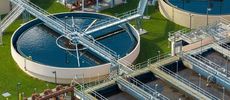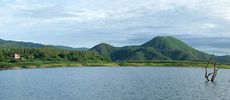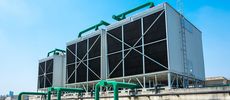Groundwater Levels and Quality Are Declining


If a river were to drop 20 inches in a decade—never mind a year—residences, businesses and farms that rely on it would panic. But the same drop in groundwater would mostly go unnoticed, hidden even as the water table plunges. Yet the volume in saturated zones under the surface is critical to supply water demands around the globe.
Half of the world's population uses groundwater for drinking and nearly as many use it to irrigate crops. The World Bank calls it "nature's insurance"—a way to protect food security, reduce poverty, and boost economic growth even when surface water is scarce.
However, pumping water out of the ground is happening faster than nature can replenish it. Not only can this wreak havoc on quantity and quality, according to a study by Alliance for Science, but it can also cause land to subside or sink. Although groundwater decline has been an issue for decades, the rate has accelerated to the point that the level is dropping 20 inches or more a year in some locations.
Let's take an in-depth look at the decline in this vital but rarely visible resource, how its depletion could impact water resources, and why water lab testing will be critical to ensure water quality from a source that previously required little treatment.
Providing an Essential Resource
Groundwater is stored in the cracks and spaces in soil, sand and rock, according to the Groundwater Foundation. Where the underground formations are made of gravel, sand, sandstone, or fractured rock, aquifers allow the water to move more freely thanks to the large connected spaces. The top of the saturated zone in these aquifers, known as the water table, drops when extraction occurs too rapidly for replacement.
This single source accounts for 97% of global freshwater resources according to Alliance for Science, although it's not as available as the water in rivers and lakes. Across the globe, underground water provides one-third by volume of drinking water, 40% of irrigation water, and 25% of industrial water. In the United States, it's the potable water source for about half of the total population and almost all of the rural population.
For millions in the world's poorest and most remote communities, subsurface water is the key to survival, supporting local ecosystems by providing water that typically requires only low-cost treatment to be drinkable.
Serving as a Buffer to Climate Change
Seepage from underground aquifers can make up for some of the water losses caused by climate change by keeping water in rivers, lakes, and wetlands. According to the World Bank, groundwater can buffer a third of the losses in economic growth caused by droughts and reduce up to half of the losses in agricultural productivity caused by variable rainfall. It offers the potential to protect farms from climate shocks and children from malnutrition that can stunt their growth.
But that makes subsurface water ever more appealing as a way to meet demand—prompting more pumping that reduces quantities and concentrates pollutants. The surging population and food production needed to feed 8 billion people is exacerbating the depletion. In parts of the world, the drop in levels over recent decades is measurable in tens of meters, according to Alliance for Science. A well that once needed to be 200 to 250 meters deep to extract water must now be drilled to 400 meters or more.
In the 2022 study, "The Hidden Wealth of Nations: Groundwater in Times of Climate Change," the World Bank determined that boreholes for irrigation account for about 70% of the groundwater withdrawn around the world. If you can envision a river 200 miles long—and also 200 miles deep and wide—that's the estimated withdrawal across the globe every year. That exceeds recharge by nearly 70 cubic miles and degrades water quality as well.
Dropping Levels Mean Declining Quality
A U.S. survey to determine top concerns related to groundwater depletion found that 31% of groundwater organizations cited degraded water quality and 30% reported declining well capacity. And, in California's Central Valley, the center of U.S. agriculture, wells continue to dry up despite California's Sustainable Groundwater Management Act that mandates local users bring their basins into balance by the 2040s.
When pumping exceeds recharge, the quality of the remaining water declines, according to the U.S. Geological Survey. For example, depletion leaves room for saltwater to intrude in coast and even inland aquifers. Additionally, most crops don't grow well when irrigated with water with high salinity. As water quantities decline, contaminants from pesticides and fertilizers, waste from sewers and septic tanks, hazardous materials, and landfills may all concentrate in the aquifers.
Water quality labs will be critical to providing the testing to ensure that a water source that once required relatively minimal treatment still meets standards for public health and safety.






